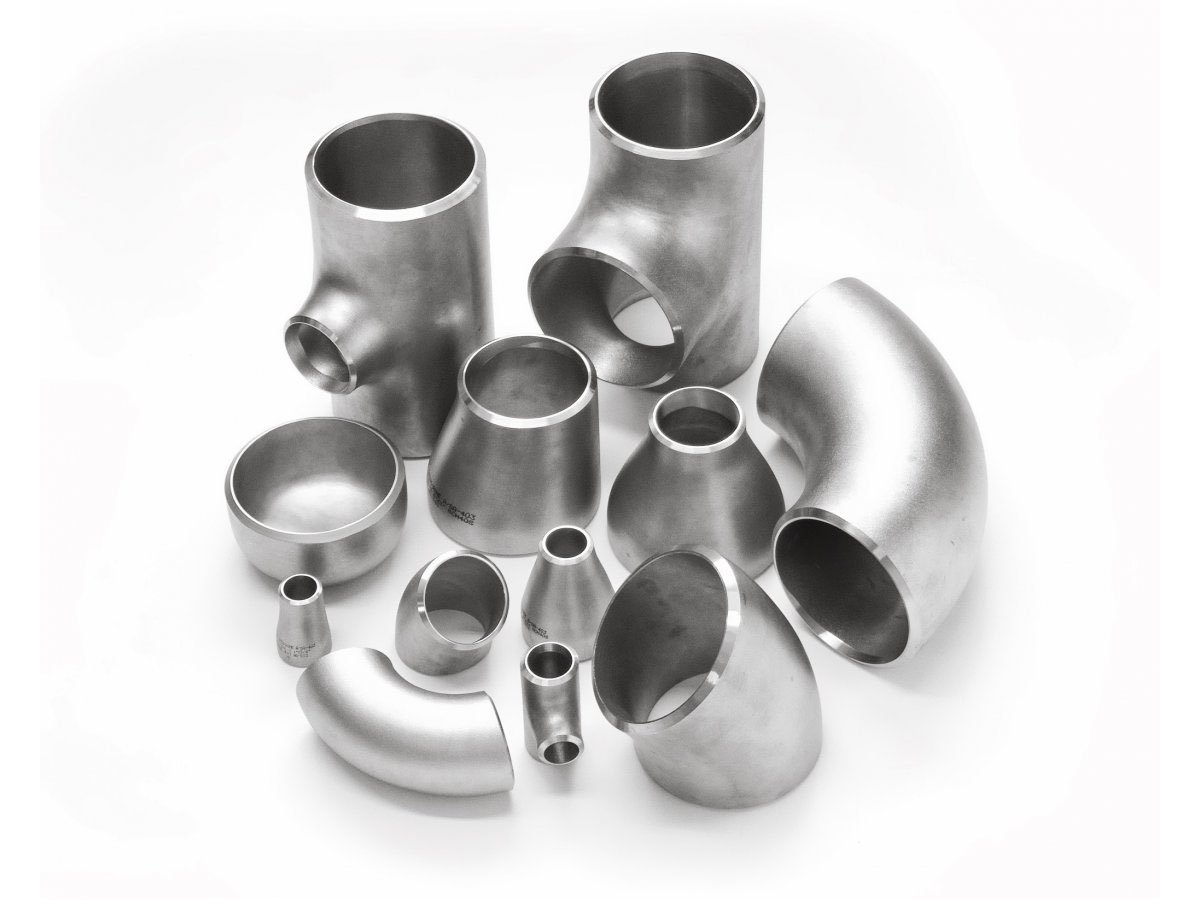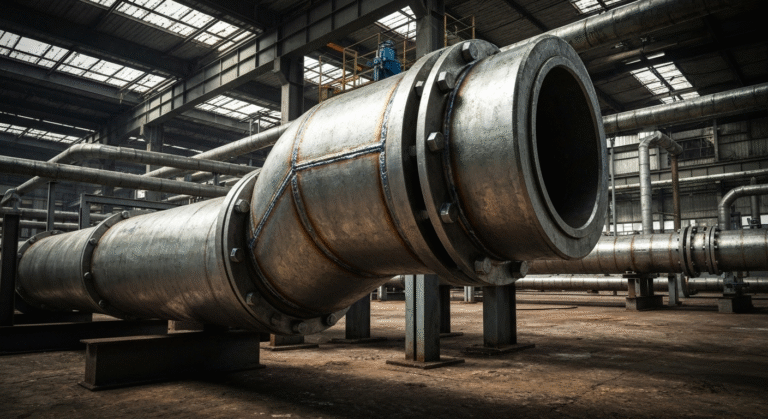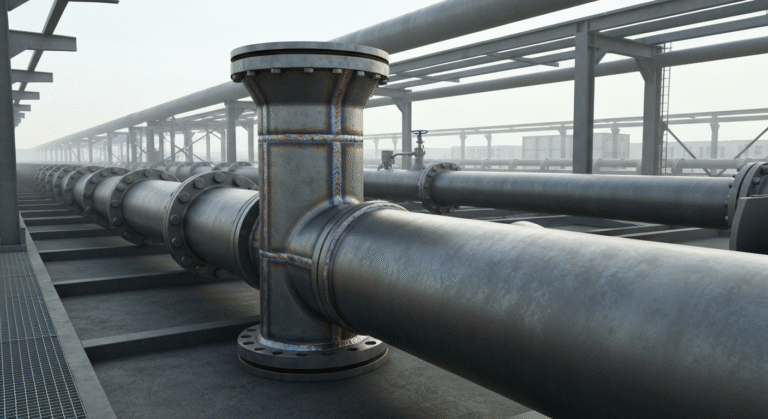-
Zona industrial de Yinzhuang, condado de Mengcun, ciudad de Cangzhou, provincia de Hebei, China

Stainless Steel Pipe Fittings: Quality and Durability

Are these stainless steel fittings and if so why? : r/Plumbing
Yes, these are stainless steel pipe fittings known for their superior quality and durability. Stainless steel resists corrosion, withstands high temperatures, and offers excellent strength, making it ideal for plumbing applications. Its longevity ensures reliable connections, reducing the need for frequent replacements compared to other materials.
Are these stainless steel fittings and if so why? : r/Plumbing
Yes, these are stainless steel pipe fittings because they offer exceptional durability and corrosion resistance. Made from high-quality stainless steel, they withstand extreme temperatures and pressures, making them ideal for plumbing applications. Their robust nature ensures long-lasting performance, reducing the need for frequent replacements and maintenance.
Aspectos más destacados
- Stainless steel butt weld pipe fittings are engineered for durability and reliable performance in demanding environments.
- These fittings provide secure connections for stainless steel pipes and valves, reducing leakage and enhancing system safety.
- ASTM A403 specifies the manufacturing and testing standards for stainless steel pipe fittings, ensuring quality and consistency.
- Material grades 304 and 316 offer distinct advantages in corrosion resistance and strength for various applications.
- Common types include elbows, tees, reducers, and caps, available in multiple sizes for industrial use in Australia.
- Pressure ratings and chemical composition play a crucial role in selecting the right stainless steel pipe fitting for your needs.
Introducción
Stainless steel pipe fittings are important parts in many industrial piping systems. They be strong and last a long time. These fittings join stainless steel pipes together and connect valves. This helps keep the flow steady and gives control, even in complicated setups. The fittings are good for construction, energy, and making goods because they resist rust and their build is tough. When you choose stainless steel pipe fittings, you have to think about a few things. These include the type of material, how much pressure it can handle, and if it meets ASTM standards. All of these help make sure you get good results and keep things safe.
Understanding Stainless Steel Butt Weld Pipe Fittings

Stainless steel butt weld pipe fittings help connect pipes in many factories and work areas. They are joined from end to end. The pipes are welded where the edges are cut at an angle. This creates a strong metal bond and adds strength to the system. It also stops leaks well. Because this bond is so secure, it can handle high pressure and hot or cold temperatures. That is why these fittings are used a lot in pipelines that carry liquids and gases.
In plumbing and many work areas, stainless steel butt weld fittings are very reliable. They are built strong. The fittings can take on tough conditions, including places where things can rust or be damaged by heavy use. Because of this, people choose them for building strong pipe networks. They are also a good pick when you need to put in valves or other key parts in your system.
Key Characteristics and How They Differ from Other Fittings
Butt weld pipe fittings are made from stainless steel. They are built to join directly and fully with stainless steel pipes through welding. This way of joining is not like socket weld or threaded fittings. Socket weld fittings go over the pipe end and use a fillet weld. Threaded fittings are joined by screwing them together. Butt weld fittings, on the other hand, have their ends bevelled. This helps line them up with each other for welding to create one solid piece.
This design helps to improve flow inside the pipe. There are no sharp changes or turbulence inside, like what can happen with socket or threaded fittings. Huron Alloys says, “A welded connection gives better performance and a smooth metal structure that increases system strength.” There are no threads or sockets here, so leaks are less likely. It also lets you change the size or path of pipes slowly, which is useful when fitting valves.
By picking butt weld fittings, you get to use them with more sizes and thicknesses of pipe. These fittings are good for many situations and work well when there are high standards for safety and how well things run. That’s why they are a must in many industrial jobs.
Common Types and Standard Sizes Available in Australia
Australia’s industrial sector relies on an array of stainless steel butt weld pipe fittings to manage diverse applications. The most frequently used types include elbows for directional changes, tees for branching, reducers for connecting different pipe sizes, and caps for sealing pipe ends. Each fitting type supports the integration of valves and auxiliary equipment, enhancing system versatility.
Standard sizes for these fittings span from small diameters to large, supporting various pressure and flow needs. Both seamless and welded options are available, with schedules from 10s to 80s and beyond. This allows for tailored solutions in construction, energy, and manufacturing.
Tipo de montaje | Common Sizes (Inch) | Schedule Options | Application Example |
|---|---|---|---|
Codo | ½” – 48” | Sch 10s, 40s, 80s | Directional flow in piping |
Tee | ½” – 48” | Sch 10s, 40s, 80s | Branching off main pipe |
Reducer | ½” – 48” | Sch 10s, 40s, 80s | Connecting different pipe sizes |
Cap | ½” – 48” | Sch 10s, 40s, 80s | Sealing pipe end |
By selecting the right type and size, you ensure optimal performance for your stainless steel pipe and valve installations.
Material Grades: 304 vs 316 Stainless Steel

Choosing the right grade of stainless steel for butt weld pipe fittings is important. This makes sure the fittings last a long time and do not rust easily. Grade 304 is a common choice. It gives good strength and can handle many chemicals. Grade 316 is even better if you need more protection, especially where there is a lot of saltwater or harsh chemicals. Both grades work well with stainless steel pipes and valves. You should pick the one that fits best with your job and the place where you will use it.
When you look at 304 and 316 stainless steel, think about what they are made of. You also need to look at what your workspace will be like. The next parts will talk more about how 304 and 316 stainless steel are not the same. These parts will help you make the right choice for your fittings, pipes, valves, and weld jobs.
Chemical Composition and Corrosion Resistance
The main difference between 304 and 316 stainless steel is in what they are made of. Grade 304, also called 18/8 stainless steel, has about 18% chromium and 8% nickel. This gives it good resistance to rust and strong mechanical work. Grade 316 has an extra 2-3% molybdenum. This makes it far better when it comes to handling saltwater and tough chemicals.
That extra molybdenum means 316 stainless steel fittings work better in areas with saltwater, strong chemicals, or hard conditions. Huron Alloys says, “The grade you pick changes how long your set-up lasts and how safe it is.” For most industrial and plumbing jobs, 304 grade is enough. But in high-risk places or when dealing with the sea, it is best to use 316 for joining stainless steel pipes and valves.
If you know these main things, you can get a fitting that works well and lasts, no matter the place you use it.
How to Choose the Right Grade for Your Application
Choosing between 304 and 316 stainless steel butt weld fittings comes down to your needs and where you will use them. Think about these key things:
- Exposure to corrosive agents: If the system will be around saltwater, chemicals, or salty liquids, 316 grade is better because it has more strength against rust and wear.
- Cost versus performance: 304 grade is a good choice for most common setups. 316 is more expensive, but it gives better protection when the work is tough.
- Compatibility: Make sure the stainless steel pipe and valve you pick are the same grade as the fittings for the best match.
- Regulatory and quality standards: See if there are any rules or norms for your job that say you must use a certain grade of stainless steel.
Look at each point so your fittings work well, last long, and are safe for what you need.
Quality Standards and ASTM A403 Specification
Meeting set standards is important to be sure that stainless steel pipe fittings work well. The ASTM A403 rule has clear steps for how to make, test, and check austenitic stainless steel butt weld fittings. This rule helps make sure the fittings use top materials and must pass strong checks.
Knowing and following ASTM A403 matters for both the people who put in stainless steel pipe and the people who buy it. It gives trust in how the pipes and valves will hold together. The next parts will explain what ASTM A403 means for your project and how the pressure ratings change the way you pick fittings like these stainless steel fittings and weld fittings.
What ASTM A403 Means for Pipe Fitting Quality
ASTM A403 sets the main rules for stainless steel butt weld pipe fittings. It tells the makers what kind of material to use, how to make these fittings, and what tests must be done. The standard covers many grades such as WP304 and WP316. So, it says what chemical mix, strength, and heat use are needed for these fittings. All fittings must be made from good forgings, bars, or plates. They have to go through heat treatment to be strong.
Each fitting needs to be checked by look to spot surface marks. They might also be given more tests that do not break the fitting. These help check if the fitting is safe. If there are any bad spots that can’t be allowed, they have to be cleaned up. This way, all fittings get a smooth finish that keeps them safe. Huron Alloys says, “ASTM A403 compliance is your assurance of safety and long-term performance.” This rule is important for jobs where stainless steel pipes, fittings, and valves need to work right, even in tough places, without breaking.
If you pick fittings with the ASTM A403 mark, you know you are getting something you can trust and that meets the rules.
Pressure Ratings and Performance Requirements
Pressure ratings tell you how much force a stainless steel fitting can handle from inside the pipe. You will often see numbers like 150#. These numbers are important when picking the right butt weld fitting for your system. Using a higher pressure rating helps keep the fitting strong, especially if you connect valves that control how things flow.
Key performance requirements to think about:
- Make sure the pressure class is the same as, or higher than, your system’s maximum working pressure.
- Check that the pipe schedule and the fitting’s thickness give you enough strength for high pressure.
- Pick fittings with the same material grades so they work well together with your stainless steel pipes and valves.
- Look for fittings that meet the ASTM A403 standard, so you know they have been tested.
Having the right pressure ratings and meeting quality rules keeps your stainless steel piping system working well and safe, even in tough situations.
Conclusión
To sum up, stainless steel pipe fittings play a key part in many jobs. The quality and strength of stainless steel help these fittings last a long time. There are differences between types of stainless steel, with 304 and 316 being common. Knowing about these types can help you pick the right fittings for your needs. This is important, especially when you think about where they will be used.
It is also good to check that your fittings follow trusted quality standards, like ASTM A403. This makes sure they do what you need them to do and hold up well against things like corrosion and pressure over time. If you pick the right materials and focus on what your job needs, your work with stainless steel pipe and fittings will stay strong and last longer.
If you want help or want to see more certified stainless steel pipe fittings in Australia, you can get in touch. That way, you will get the advice you need and can find what works best for you.
Preguntas frecuentes
What are the primary applications for stainless steel butt weld pipe fittings?
Stainless steel butt weld pipe fittings are used a lot in oil and gas, energy, and construction work. The fittings help join stainless steel pipes and valves. They also help control the way things move through the pipes. You can use them when you need to split, join, or make the pipes smaller. They work well in places where the pressure is high, or there is a lot of heat, or things can cause rust.
How can I ensure proper installation and maintenance of these fittings?
To put a stainless steel pipe in right, you need to line up the slanted ends of both the pipe and the fitting. Make sure you use the right way to weld them together. After that, check the pipe for any cracks or problems on the outside, and also see if it can hold pressure well. For keeping it working well, you need to look for leaks, rust, or any signs that the pipe is wearing out. This helps to keep your stainless steel pipe safe and working the way it should.
Where can I buy certified stainless steel pipe fittings in Australia?
You can get certified stainless steel pipe fittings from well-known suppliers and distributors in Australia. Try to find companies that offer products that meet ASTM A403 standards. These fittings should come in many grades and sizes. Good suppliers will also give you documents to show their quality and to make sure they work well with stainless steel pipes and valves.


